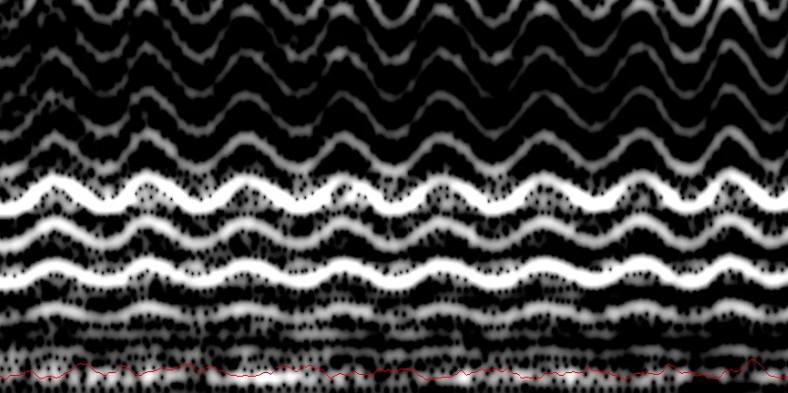Vowel Shaping
The pitch harmonics produced by the vocal cords are not the same as those that leave the mouth. The shape of vocal tract will filter regions of the harmonics, to produce the sound of a vowel. By constricting the vocal tract at different positions, different regions of the harmonics are filtered, producing different vowels.


In the above pictures, we can see there are two centers of acoustic energy. In the Fleece vowel one high and one low, and in the Strut vowel two close together. These centers of energy are call formants, and are what largely distinguish vowels.
The vowels can be plotted with the frequency of the lowest formant on the y-axis and the second lowest on the x-axis:

Notice that the Strut vowel is close to the Y=X line on the graph, and that this corresponds to its formants being close together on the spectrogram. Also notice that the Fleece vowel is far away from Y=X and that this corresponds to its formants being far apart on the spectrogram. To read a vowel from a spectrogram first figure out how far apart the formants are, and then distinguish based on the based on how high the formants are.
Higher class people have vowels that are more intelligible. What more intelligible means becomes more clear when we look a spectrograms. The formants of their vowels are distinct and do not blend as much together, as could easily happen with the Ah vowel. Their formants are not unnecessarily broad, nor very weak. The relative strength of their first two formants are balanced, and symmetric.
High class people have vowels that are geometrically pleasing, this results in greater intelligibility, allowing them to be more socially effective.
 Speech School
Speech School